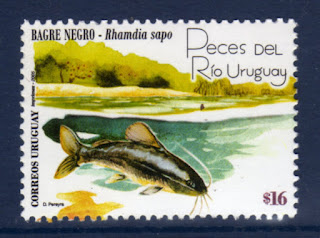Animals - Fishes - Catfishes
Red-bellied piranha (Pygocentrus nattereri)
Scientific Classification:
Kingdom : Animalia
Phylum : Chordata
Class : Actinopterygii
Order : Characiformes
Family : Serrasalmidae
Genus : Pygocentrus
Species : P. Nattereri
Description:
The Red-bellied piranha or Red piranha (Pygocentrus nattereri) is a species of piranha native to South America, found in the Amazon River Basin, coastal rivers of northeastern Brazil, and the basins of the Paraguay and Paraná. They are omnivorous foragers and feed on insects, worms, crustaceans and fish. They are not a migratory species, but do travel to seek out conditions conducive to breeding and spawning during periods of increased rainfall. Red-bellied piranhas often travel in shoals as a predatory defense, but rarely exhibit group hunting behavior. Acoustic communication is common, and is sometimes exhibited along with aggressive behaviors. At this time, the red-bellied piranha is not considered to be a threatened species by the IUCN, and therefore, there are no conservation strategies in place to target this species. Through media influence, the red-bellied piranha has developed a reputation as a ferocious predator, though this is not actually the case. They are a popular aquarium fish.
The red-bellied piranha belongs to the subfamily Serrasalminae, which is a group of medium to large-sized characids and includes other closely related omnivores such as pacus. They are characterized by deep, lateral compressed bodies and long dorsal fins. Within the subfamily, red-bellied piranhas are classified in the genus Pygocentrus, which is distinguished by the unusual dentition and differing head width dimensions. The red-bellied piranha is considered to be highly carnivorous, while most non-piranhas in the family are primarily herbivorous. However, it should be noted that red-bellied piranha is actually omnivorous.
The red-bellied piranha has a popular reputation as a ferocious predator, despite being primarily a scavenger. As their name suggests, red-bellied piranhas have a reddish tinge to the belly when fully grown, although juveniles are a silver color with darker spots. The rest of the body is often gray with silver-flecked scales. Sometimes, blackish spots appear behind the gills and the anal fin is usually black at the base. The pectoral and pelvic fins may vary from red to orange. Females can be distinguished from males by the slightly deeper red color of their bellies.
The largest measured individuals were around 50 centimetres (20 in) in length and weighed around 3.9 kilograms (8.6 lb).
Binomial Name:
Name : Pygocentrus nattereri
Taxonomist : Rudolf Kner (Linz - Austria)
Year : 1858
Subspecies : None, or not data available
Synonyms : Serrasalmus nattereri
Conservation Status by IUCN:
Status : Not Evaluated, or not data available
Philatelic Issues
2005 – Uruguay – Stamp 4 of 4, from River Fishes Series
Issue information:
Country: Uruguay
Date: November 22nd, 2005
Printed: 15.000 Copies
Type: Stamp from Series of 4 Stamps
Value: UYP 16
Stamp: Rectangular
Size: 39 mm. x 27 mm.
Perforation: Circular
Gum: Water Activated



































